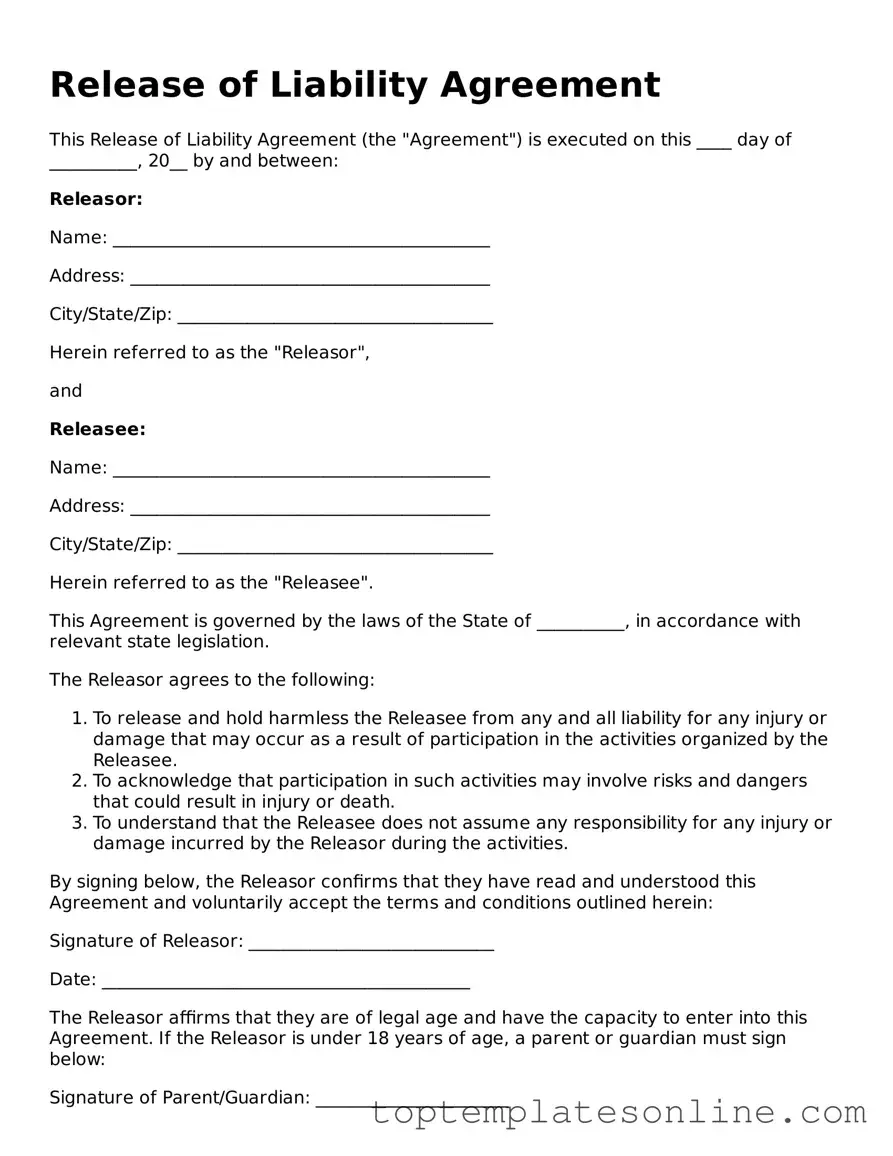The Release of Liability form serves as a critical tool for individuals and organizations seeking to manage risk and protect themselves from legal claims. This document is often utilized in various contexts, such as sports activities, recreational events, and professional services, where participants may face inherent risks. By signing this form, individuals acknowledge their understanding of these risks and agree to waive their right to hold the organizer or provider accountable for any injuries or damages that may occur. It typically includes essential components such as a clear statement of the risks involved, an acknowledgment of voluntary participation, and a section where the participant explicitly releases the provider from liability. Furthermore, the form may also outline specific terms regarding the scope of the release, ensuring that participants are fully informed about what they are relinquishing. This proactive measure not only helps to safeguard organizations from potential lawsuits but also encourages participants to engage in activities with a clearer understanding of their responsibilities. The importance of this form cannot be overstated, as it fosters a safer environment while allowing individuals to enjoy various experiences without the looming threat of legal repercussions.
